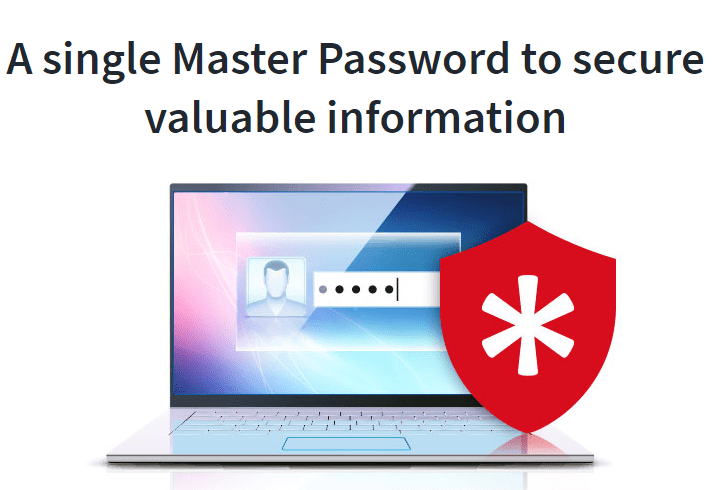Internet-connected devices like smartphones, tablets, TV, home appliances and others open new ways for hackers to attack and steal user data. All this has made the Internet a risky place. Therefore, to reduce the risk of online threats, data breaches, identity theft we need to take certain security measures into consideration.
Here we will bring you certain tips, that will help you get started and reduce the risk of a data breach:
Ways to Mitigate Risk of Data Breach
1. Use and create strong passwords:
In this modern world corporate attacks have become a common thing. Therefore, using complex passwords string is always recommended. Certainly, you’ve heard it a thousand times before, but trust me complex, strong, and unique passwords are a great way to keep personal and financial information secure. This is true as the number of breaches is rapidly increasing. A single database breach reveals tens of thousands of user passwords. With this, you can imagine if you use the same password for your accounts, hackers can take advantage of it to access all your accounts.
Our opinion: Use a password manager like TweakPass that helps to save and generate strong passwords for all of your accounts. This password manager saves your credentials, card details, and other confidential data in an encrypted secure vault that is secured with a master password accessible only by you.

Start Securing your all passwords with TweakPass!!
Full Review on Tweakpass: Best Password Manager
2. Improve Network Security:
Now that the logins are safe, it’s time to boost network security.
We all use a password-protected router to encrypt data be it home or at work. But, while traveling most of us make the most common mistake of using public Wifi. The problem with public Wi-fi is, it is easily accessible. This means onlookers can quickly access your device and all the data stored on it. That’s why using a Virtual Private Network (VPN) is recommended.
VPN is a connection method that is used to add security over the internet. To know more about VPN for travelers read the best VPN for travelers. Moreover,
3. Use a Firewall:
Even when your network is secure, using a firewall is always a great idea. As a firewall is capable of blocking unauthorized access on your PC and other devices. Often Firewall is part of the all-inclusive security software. However, if you don’t have one it’s time to install one and run. Moreover, Firewall ensures the security of all the connected devices. It’s more useful if you use the Internet of Things (IoT) devices like webcams and others as they don’t have any inbuilt security, thus giving easy access to hackers to take over the entire network.
4. Think before you click:
Now that account security, network security all are in place you’ve to act smartly when online. Make sure you don’t invite danger. Human error is the most popular reasons for cyber-attacks. Therefore, before you download an attachment received from unknown sources or visit an unknown site double-check it.
Most online threats today are based on social engineering, therefore, you need to safeguard yourself from them. Be skeptical of offers that sound too good to be true. Avoid revealing your personal information when online.
5. Be a Selective Sharer:
Keep a check on what you share. Stay cautious when it comes to sharing information that might reveal your identity. Hackers use various tactics to get all your personal information and impersonate to get credit cards, loans, etc. in your name.
6. Protect Your Smartphone:
Smartphones are just as vulnerable as a laptop, desktop to the online threat. In fact, on a regular basis, mobile devices face new risks – malicious apps, infected link shared via messages, social media , etc. Therefore, before you respond to any promotional messages, or click on any link be careful. Moreover, before downloading any app read user reviews to know more about the app. In addition to this, make sure you have security software installed on your mobile device. If you don’t have one you can download Systweak Anti Malware by clicking on the button below:
Make Your Device Malware Proof With Systweak Anti-Malware!!
7. Do smart surfing and online shopping:
When visiting any banking site, or shopping online check website’s address it should start with “HTTPS”. If that isn’t the case exit from the site, as a side without HTTPS and padlock is not secure and doesn’t use encryption. Plus, read website URL if you find any spelling mistakes or grammatical errors consider the site malicious.
8. Keep your software updated:
Always keep all installed software updated to have the latest security patches. Plus, enable automatic updates to get the latest updates without manual intervention. Moreover, run updated security software to scan your system for threats.
9. Keep yourself updated:
With the rise in online threats, ransomware attacks to make sure you don’t make the mistake to become a victim. The ransomware attacks are on the rise, in 2019 itself we have seen many attacks. Therefore, to stay on top of threats and you need to look out of threats and keep yourself updated. it is on the rise. you need to keep yourself updated. are evolving all the time, so make sure you
10. Keep your guard up:
Stay wary of what you do online, sites you visit, what you share, etc. To get help use security software that blocks unauthorized access. Plus, always keep your data backed up to handle serious situations. By taking these preventive measures you can stay secure and can mitigate the risk of data breach.
By keeping these tips in mind you can reduce risk of a data breach. Hope you liked reading the guide, do share it with your friends. If you have any other tips in mind do let us know in the comments section.









Leave a Reply